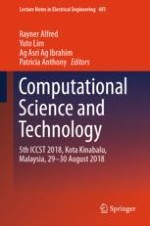2019 | Buch
Computational Science and Technology
5th ICCST 2018, Kota Kinabalu, Malaysia, 29-30 August 2018
herausgegeben von: Prof. Rayner Alfred, Prof. Dr. Yuto Lim, Prof. Ag Asri Ag Ibrahim, Patricia Anthony
Verlag: Springer Singapore
Buchreihe : Lecture Notes in Electrical Engineering
